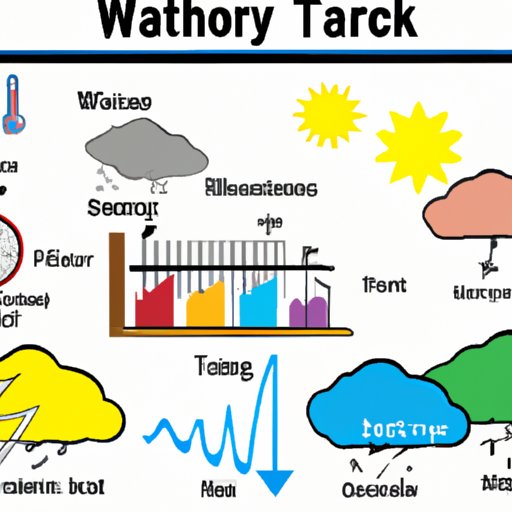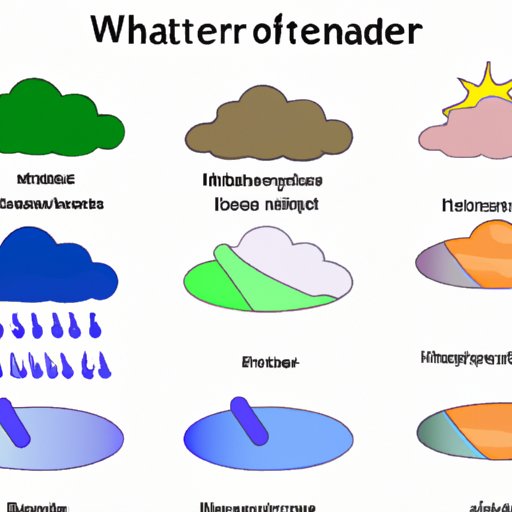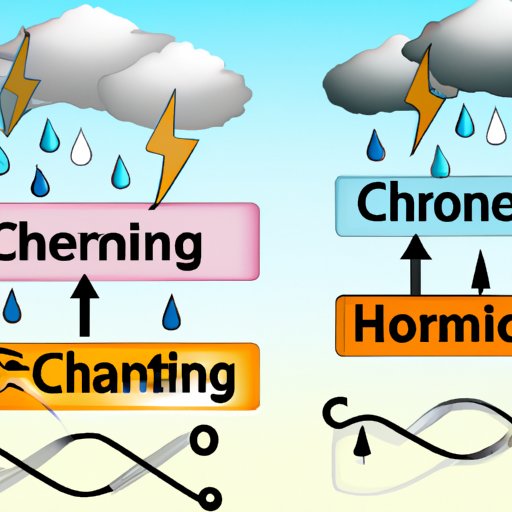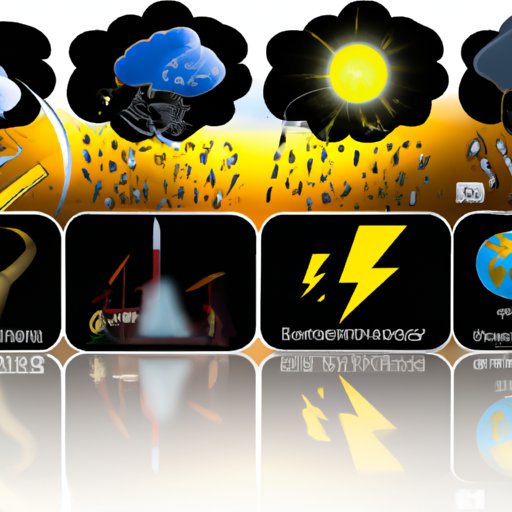Introduction
Weather is a phenomenon that affects us all, but what is the science behind it? Weather science, or meteorology, is the study of the atmosphere and its effects on the environment. It involves understanding how the atmosphere works and how it interacts with other natural and man-made elements to create different types of weather. This article will explore the history of weather science, an overview of meteorology, how it is predicted and measured, the different types of weather, the link between weather and climate change, and its impact on human life.
Exploring the History of Weather Science
Weather has been studied for centuries, with early observations recorded in ancient documents such as the Bible and Chinese literature. Early weather records were mainly anecdotal, relying heavily on physical phenomena such as cloud cover and wind direction. Over time, more scientific methods of recording and predicting weather began to emerge.
In the 17th century, the Royal Society in England conducted experiments to better understand the atmosphere and its effects on weather. In the 18th century, meteorology was established as a formal field of study, with scientists like Luke Howard and Jean-Baptiste Lamarck making significant contributions. By the 19th century, technological advancements such as the telegraph and the invention of the barometer enabled meteorologists to collect more accurate data about the atmosphere.
An Overview of Meteorology: The Science of Weather
Meteorology is the study of the atmosphere and its effects on the environment. It involves understanding how the atmosphere works and how it interacts with other natural and man-made elements to create different types of weather. Meteorology is divided into two main branches: dynamic meteorology, which focuses on the behavior of the atmosphere, and synoptic meteorology, which studies the large-scale patterns of weather.
Meteorologists use a variety of tools and techniques to study the atmosphere, including satellites, radar, and computer models. These tools are used to measure temperature, pressure, wind speed and direction, humidity, precipitation, and other variables. Meteorologists also use mathematical equations to predict future weather conditions.

How Weather is Predicted and Measured
Weather forecasting relies heavily on advanced computer models that take into account atmospheric conditions, topography, and other factors. These models are used to generate forecasts that can range from days to weeks in advance. Meteorologists also use radar and satellite imagery to monitor current weather conditions and make predictions about future weather patterns.
In addition to computer models, meteorologists use a variety of tools to measure weather conditions. These tools include thermometers, barometers, anemometers, hygrometers, and rain gauges. These instruments are used to measure temperature, pressure, wind speed and direction, humidity, and precipitation.

Understanding the Different Types of Weather
The type of weather experienced in a given area is determined by a variety of factors, including air pressure, temperature, wind direction, and moisture. Common types of weather include sunny, cloudy, rainy, and snowy days. Other types of weather, such as thunderstorms and tornadoes, are more severe and can cause significant damage.
Weather can also be affected by seasonal changes. During the summer months, warm air masses move northward, bringing hot and humid conditions. In the winter months, cold air masses move southward, bringing colder temperatures and snow. Understanding how these air masses interact and affect the atmosphere can help meteorologists better predict and measure weather conditions.

Examining the Link Between Weather and Climate Change
Climate change is having a profound effect on the Earth’s atmosphere, leading to more extreme weather events. Warmer temperatures can cause more frequent and intense heat waves, while rising sea levels can lead to more frequent and intense storms. Additionally, human activities such as burning fossil fuels and deforestation can contribute to climate change, further exacerbating its effects on the atmosphere.
Climate change is also affecting the frequency and intensity of other weather events. For example, research suggests that climate change is causing more frequent and intense droughts in some parts of the world. Additionally, climate change is causing more frequent and intense floods in some areas, due to increased precipitation and melting ice caps.
Investigating the Impact of Weather on Human Life
Weather has a major impact on human life, from economic impacts to health impacts. On the economic front, severe weather can cause significant losses in crop yields, resulting in higher food prices. Additionally, severe weather can cause property damage, leading to higher insurance premiums. Finally, extreme weather can disrupt transportation networks, leading to delays and cancellations.
On the health front, extreme weather can have serious consequences. Heat waves can cause dehydration and heat exhaustion, while cold temperatures can cause hypothermia and frostbite. Additionally, extreme weather can cause respiratory illnesses due to air pollution, as well as injuries due to falling debris.
Conclusion
Weather science, or meteorology, is the study of the atmosphere and its effects on the environment. This article has explored the history of weather science, an overview of meteorology, how it is predicted and measured, the different types of weather, the link between weather and climate change, and its impact on human life. Meteorologists use advanced computer models, satellites, and other tools to measure and predict weather. Additionally, climate change is having a profound effect on the Earth’s atmosphere, leading to more extreme weather events. Finally, weather can have significant economic and health impacts on humans.
It is clear that weather science is an important field of study, and one that has far-reaching implications. Research into meteorology and climate change must continue in order to better understand and prepare for the impacts of extreme weather events. This knowledge can then be used to inform policy decisions and ensure a safer and healthier future for all.
(Note: Is this article not meeting your expectations? Do you have knowledge or insights to share? Unlock new opportunities and expand your reach by joining our authors team. Click Registration to join us and share your expertise with our readers.)
